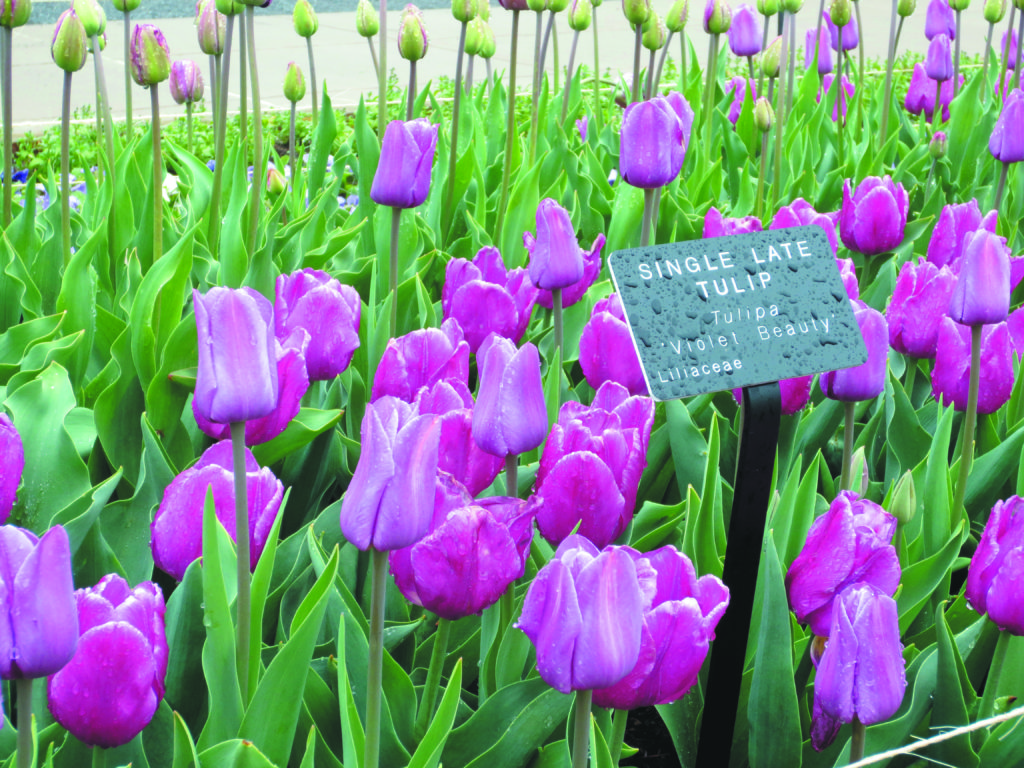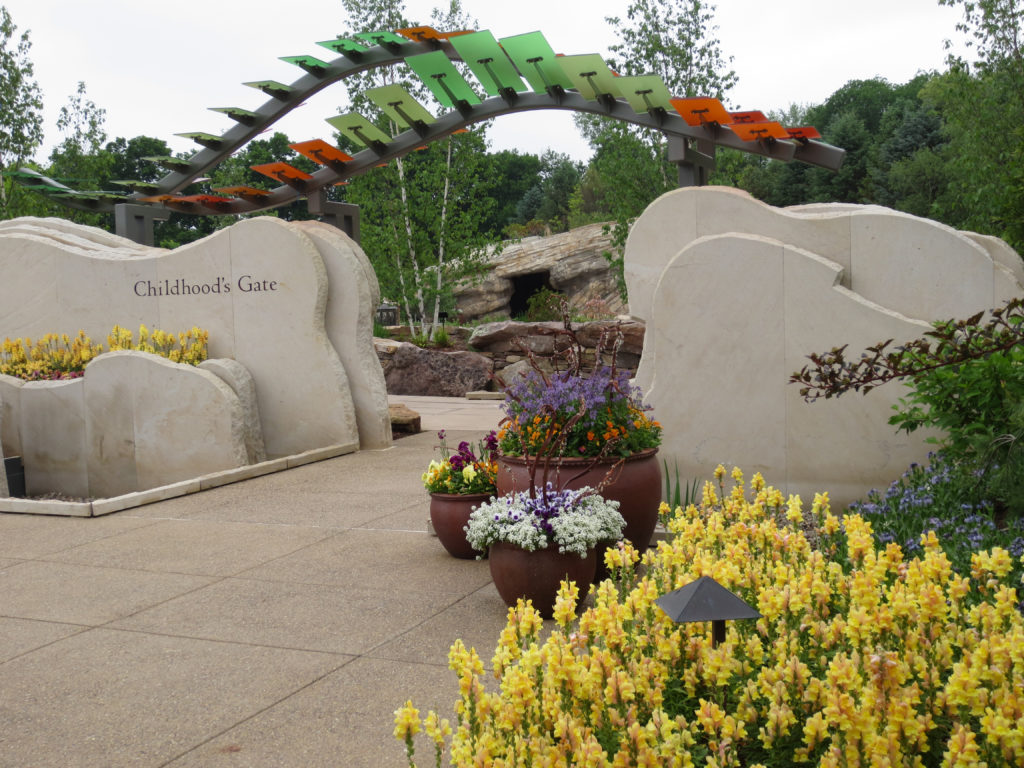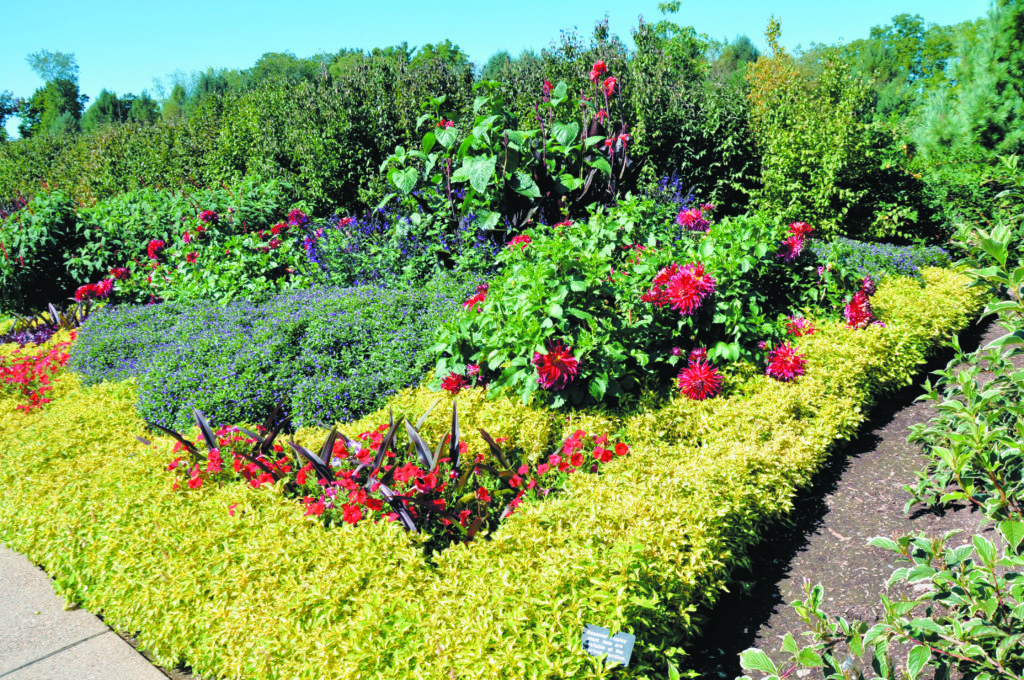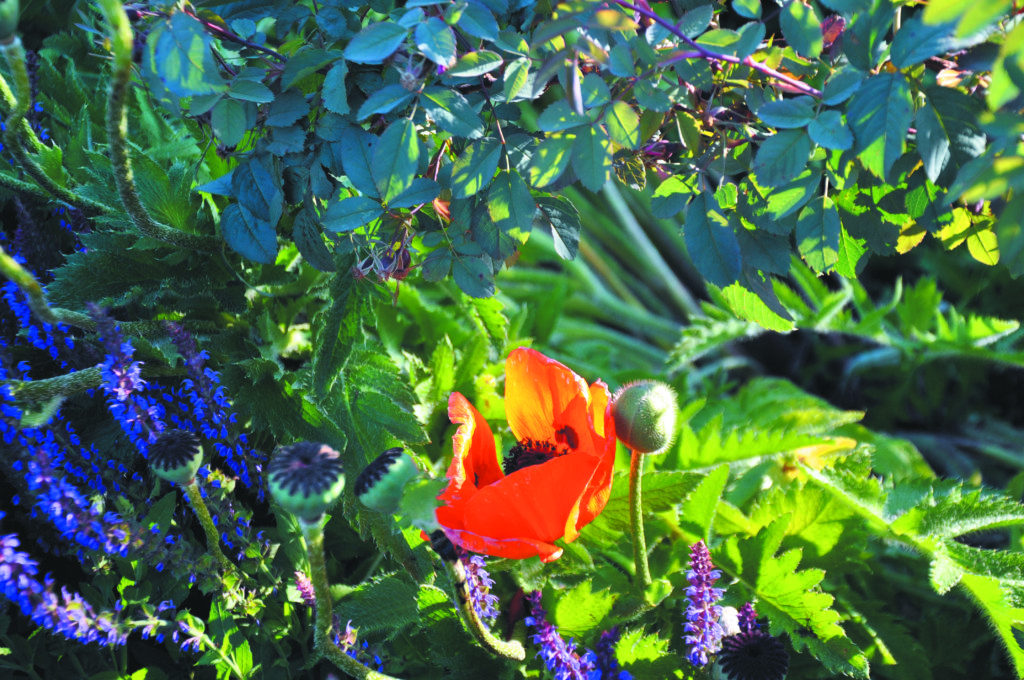There is more to Happy Valley than football.
Hidden within University Park is a blossoming display of some of the most colorful plants from around the world.
The Arboretum at Penn State encompasses 370 acres total, however, six acres make up the H.O. Smith Botanic Gardens.
Trustees set aside the 370 acres in 1999. The H.O. Smith Botanic Gardens are named for 2007 donor Skip Smith’s father, an alumnus. The garden was finished in 2009.
“We currently have over 21,000 plants in our permanent collections, representing over 850 different varieties,” said Shari Edelson, director of horticulture and curator at the Arboretum, that make up the six acres in the Botanic Garden.

Children a focus
Director Kim C. Steiner said the Arboretum has gained more visits in recent years because of the impact on children.
“The biggest addition has been the completion of the one-acre children’s garden in 2014. As we had hoped, it is fully as attractive to adults as it is to children, and attendance has increased greatly since it was finished.”
Linda Duerr is the coordinator for children’s programs. She described the impact of the children’s garden as one that is enjoyed by every visitor.
“Childhood’s Gate Children’s Garden is a wonder in all seasons. One of the most attractive aspects of this garden is how it changes and affords a ‘different’ perspective with repeated visits. Whether it is seeing our bunny sculptures peeking out of the snow, our own spring tulip display, the amazing herbs and vegetables in our summer harvest garden, or the bounty of pumpkins that decorate the fall landscape, the children’s garden is a favorite space for all ages in all seasons.”

Great time to visit
Spring time is a popular time for all ages to come to the Arboretum. All is in bloom on the grounds and there is so much to see.
“Early- to mid-May is a wonderful time to visit, as this is when our tulip display is at its peak. Visitors can expect to see over 30,000 tulips, as well as many other species of flowering bulbs, throughout the gardens. We also grow many types of spring-flowering ornamental trees and shrubs, which add beauty to our gardens throughout the spring season,” said Edelson.
Edelson spring time is her favorite time to visit the gardens.
“Spring visitors will definitely want to take a walk through the Kathryn Bower Smith Strolling Garden to see our daffodils, crabapples, and many species of flowering shrubs in bloom,” she said. “The Annual Display Garden, where we plant our main tulip display, is also a very popular destination in the spring.”
It is also during the spring when the Arboretum is rented for the purpose of weddings. Couples enjoy the natural background and the stage area of the garden where they can exchange their vows.
“Our rental season is primarily from May 16 through September 30 and the majority of rentals are for wedding ceremonies. We rent venues for an average of 26 weddings and 10 University gatherings and private events each season,” said event and marketing director Kate Reeder. She also noted the Arboretum does not rent venues for wedding receptions.

Plants take center stage
A big draw for visitors is the variety of plants on display. This is not your mother’s backyard garden said Edelson.
“Many of our plants have their origins in other parts of the world, including Europe, Asia, Africa and other regions of the Americas. However, we also grow many plants that are native to eastern North America, and Pennsylvania, in particular,” she said. “We also enjoy growing unusual species — one visitor favorite is the voodoo lily (Amorphophallus konjac). To attract the flies that pollinate it, the voodoo lily produces a huge flower that looks — and smells — like rotting meat! People are often fascinated by this plant because it serves as such a unique example of the relationships that can develop between plants and their pollinating insects over evolutionary time.”
It’s not just the flowers that people love. Blossoming trees enhance the landscape as well, said Reeder.
“A favorite landscape feature for many is a majestic red elm (Ulmas rubra) that some describe as “the tree of life.” Its lowest limbs reach as far and wide as its massive crown, swooping down towards the ground and back up again, as if wishing to defy gravity,” Reeder said.

A living classroom
Because it is a Penn State location, college students play a huge role in how the Arboretum is maintained and used.
Edelson said the Arborteum serves as a “living classroom,” for Penn State courses in horticulture, landscape architecture, and many other disciplines.
“Professors often teach class sessions in the gardens, and the Arboretum has been the site of many research projects led by both students and professional scholars. For students seeking to get more involved, we offer a range of volunteer opportunities, as well as hands-on summer internships,” Edelson said.
It’s also just a popular spot for students to learn on their own time, Reeder said.
“The Arboretum is popular with Penn State students as a retreat where they can study or, alternatively, take a break from academic pursuits by strolling with a date or with friends through the gardens. It is not unusual for wedding clients to say that they have visited the gardens many times together and that the groom-to-be even proposed in the gardens.”
Visitors also give feedback to the director and others at the gardens.
“The children’s garden is a favorite place for visitors of all ages. People constantly stop in amazement and say, ‘This place is enchanting!’” said Duerr. “Another comment I hear often is how surprised visitors are when they return to the garden and notice something they did not see on a previous visit — and yes, it was there the last time, too.”
The garden has become like home to many visitors, Duerr added.
“Families often visit the garden on a regular basis and tell me how they feel as if the garden grows along with their children,” she said.


